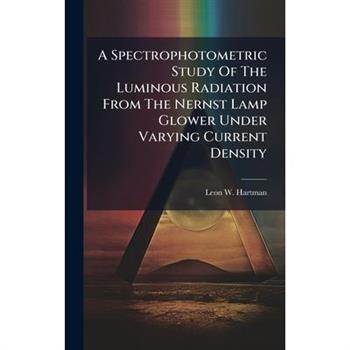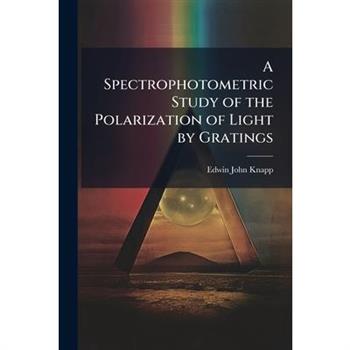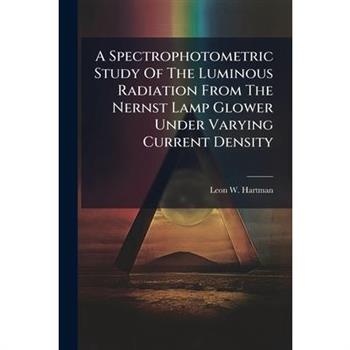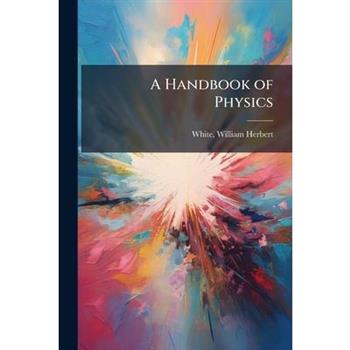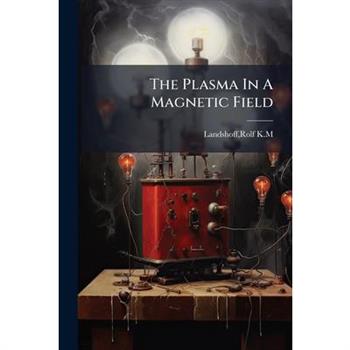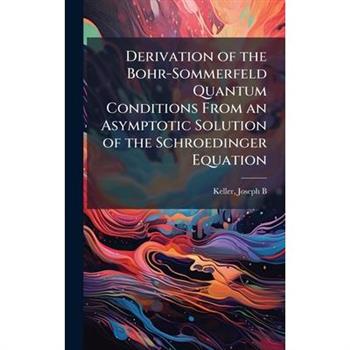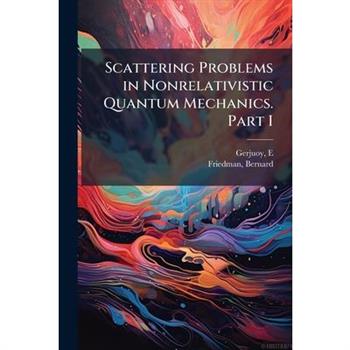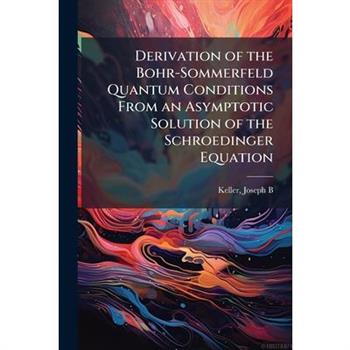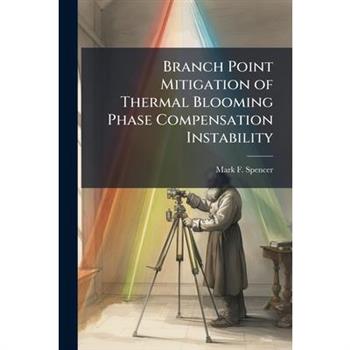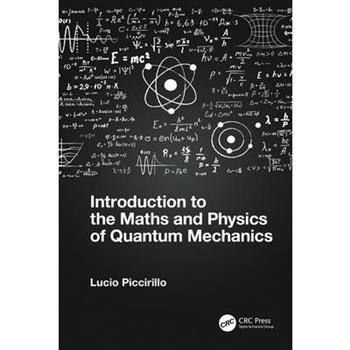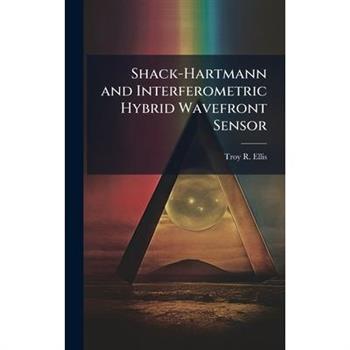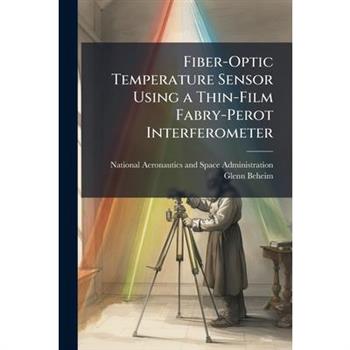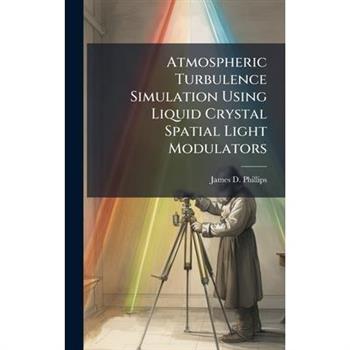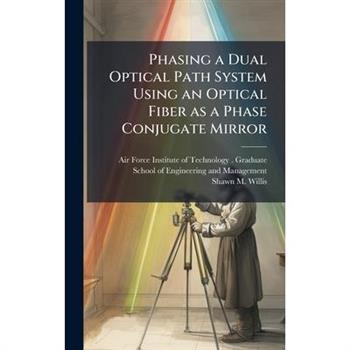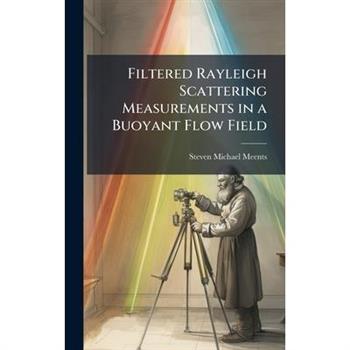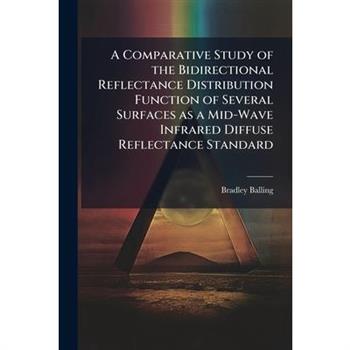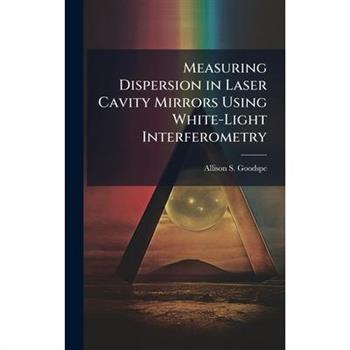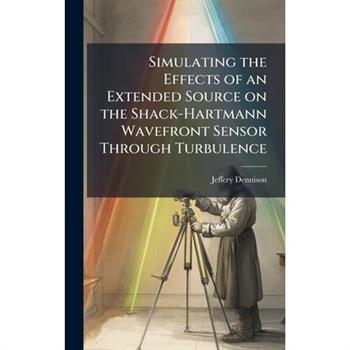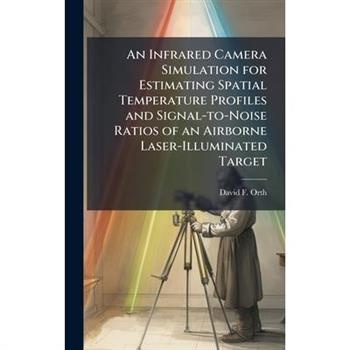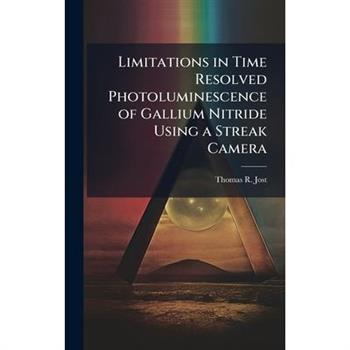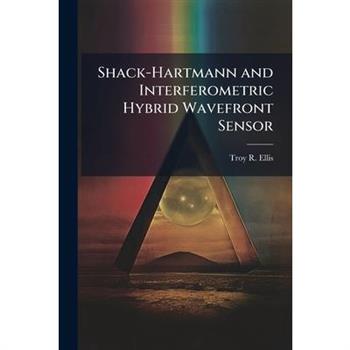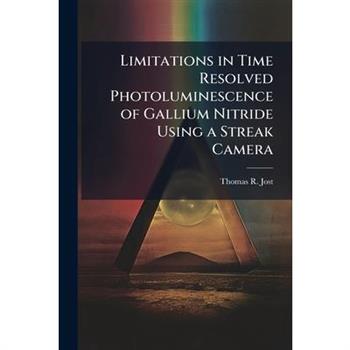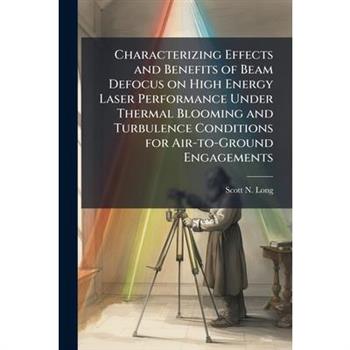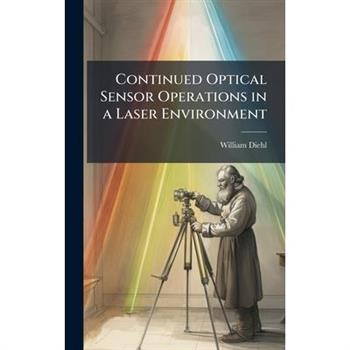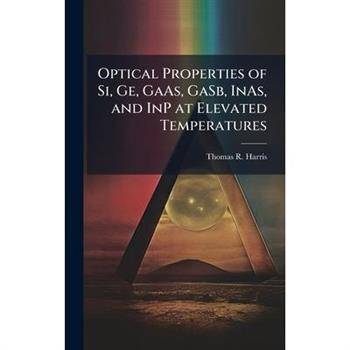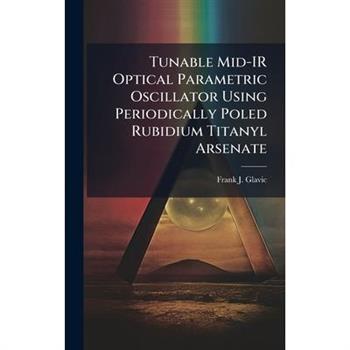Diagnostic Biomedical Optics
This is a dedicated book covering all the important topics ranging from fundamentals to materials and methods to applications.
A Spectrophotometric Study Of The Luminous Radiation From The Nernst Lamp Glower Under Varying Current Density
"A Spectrophotometric Study Of The Luminous Radiation From The Nernst Lamp Glower Under Varying Current Density" presents a detailed investigation into the optical properties of the Nernst lamp. Authored by Leon W. Hartman, this study offers valuable insights into the relationship between current density and luminous radiation. The research employs spectrophotometric techniques to analyze the light emitted by the Nernst lamp, providing a quantitative assessment of its performance under different operating conditions. This scientific work is essential for researchers and engineers interested in the physics of light sources and the application of spectrophotometry. The findings contribute to a deeper understanding of the Nernst lamp and its potential uses in various scientific and technical fields.This work has been selected by scholars as being culturally important, and is part of the knowledge base of civilization as we know it. This work was reproduced from the original artifact, and remains as true to the original work as possible. Therefore, you will see the original copyright references, library stamps (as most of these works have been housed in our most important libraries around the world), and other notations in the work.This work is in the public domain in the United States of America, and possibly other nations. Within the United States, you may freely copy and distribute this work, as no entity (individual or corporate) has a copyright on the body of the work.As a reproduction of a historical artifact, this work may contain missing or blurred pages, poor pictures, errant marks, etc. Scholars believe, and we concur, that this work is important enough to be preserved, reproduced, and made generally available to the public. We appreciate your support of the preservation process, and thank you for being an important part of keeping this knowledge alive and relevant.
Quantum Gravity
The description of Nature in physics currently falls into two parts: the microscopic and the macroscopic. The microscopic world (molecules, atoms, particles) is described by quantum theory, whereas the macroscopic world (planets, stars, galaxies, universe) is ruled by a classical interaction - gravity - that is described by Einstein's theory of general relativity. This book describes in detail the attempts to unify quantum theory and relativity, which are essential to understanding the origin of the Universe and the final fate of black holes. The construction of a consistent quantum theory is among the most important open problems in fundamental physics. This book describes the motivation for constructing such a theory and presents the main approaches. These approaches include covariant quantization, canonical quantization (metric and loop approaches), and string theory. The book also covers the main applications, which include black holes and cosmology. This new edition includes updated content throughout, as well as further explorations of the holographic principle, unimodular gravity, quantum-gravitational correction terms, and possible observations, as these are topics that have experienced important developments since the last edition.
Manual Of Radio Telegraphy For Radio Operators Using Federal Arc Radio Transmitting Equipment
A comprehensive guide, "Manual Of Radio Telegraphy For Radio Operators Using Federal Arc Radio Transmitting Equipment" offers detailed instruction for operating early radio transmitting equipment. Published by the Federal Telegraph Company of San Francisco, this manual provides essential knowledge for radio operators working with Federal arc radio transmitters. This manual serves as a valuable resource for understanding the technology and practices of early 20th-century radio communication.This work has been selected by scholars as being culturally important, and is part of the knowledge base of civilization as we know it. This work was reproduced from the original artifact, and remains as true to the original work as possible. Therefore, you will see the original copyright references, library stamps (as most of these works have been housed in our most important libraries around the world), and other notations in the work.This work is in the public domain in the United States of America, and possibly other nations. Within the United States, you may freely copy and distribute this work, as no entity (individual or corporate) has a copyright on the body of the work.As a reproduction of a historical artifact, this work may contain missing or blurred pages, poor pictures, errant marks, etc. Scholars believe, and we concur, that this work is important enough to be preserved, reproduced, and made generally available to the public. We appreciate your support of the preservation process, and thank you for being an important part of keeping this knowledge alive and relevant.
On The Reflexions Of Polarized Light From Polished Surfaces, Transparent And Metallic
"On The Reflexions Of Polarized Light From Polished Surfaces, Transparent And Metallic" by Samuel Haughton presents a detailed investigation into the behavior of polarized light as it interacts with various surfaces. This scientific paper, originally received and read in June 1862, delves into the complexities of light reflection from both transparent and metallic materials. Haughton's work contributes to the field of optics, providing insights into the mathematical and physical properties governing polarized light. This publication offers a valuable resource for researchers, historians of science, and anyone interested in the evolution of our understanding of light and matter. It showcases the meticulous approach to scientific inquiry prevalent in the 19th century and remains relevant for those studying the foundations of modern physics.This work has been selected by scholars as being culturally important, and is part of the knowledge base of civilization as we know it. This work was reproduced from the original artifact, and remains as true to the original work as possible. Therefore, you will see the original copyright references, library stamps (as most of these works have been housed in our most important libraries around the world), and other notations in the work.This work is in the public domain in the United States of America, and possibly other nations. Within the United States, you may freely copy and distribute this work, as no entity (individual or corporate) has a copyright on the body of the work.As a reproduction of a historical artifact, this work may contain missing or blurred pages, poor pictures, errant marks, etc. Scholars believe, and we concur, that this work is important enough to be preserved, reproduced, and made generally available to the public. We appreciate your support of the preservation process, and thank you for being an important part of keeping this knowledge alive and relevant.
On The Reflexions Of Polarized Light From Polished Surfaces, Transparent And Metallic
"On The Reflexions Of Polarized Light From Polished Surfaces, Transparent And Metallic" by Samuel Haughton presents a detailed investigation into the behavior of polarized light as it interacts with various surfaces. This scientific paper, originally received and read in June 1862, delves into the complexities of light reflection from both transparent and metallic materials. Haughton's work contributes to the field of optics, providing insights into the mathematical and physical properties governing polarized light. This publication offers a valuable resource for researchers, historians of science, and anyone interested in the evolution of our understanding of light and matter. It showcases the meticulous approach to scientific inquiry prevalent in the 19th century and remains relevant for those studying the foundations of modern physics.This work has been selected by scholars as being culturally important, and is part of the knowledge base of civilization as we know it. This work was reproduced from the original artifact, and remains as true to the original work as possible. Therefore, you will see the original copyright references, library stamps (as most of these works have been housed in our most important libraries around the world), and other notations in the work.This work is in the public domain in the United States of America, and possibly other nations. Within the United States, you may freely copy and distribute this work, as no entity (individual or corporate) has a copyright on the body of the work.As a reproduction of a historical artifact, this work may contain missing or blurred pages, poor pictures, errant marks, etc. Scholars believe, and we concur, that this work is important enough to be preserved, reproduced, and made generally available to the public. We appreciate your support of the preservation process, and thank you for being an important part of keeping this knowledge alive and relevant.
A Spectrophotometric Study of the Polarization of Light by Gratings
"A Spectrophotometric Study of the Polarization of Light by Gratings" (1921) presents a detailed investigation into the behavior of light as it interacts with diffraction gratings. Authored by Edwin John Knapp, this study delves into the spectrophotometric analysis of polarized light, offering insights into the optical properties of gratings. The work provides meticulous measurements and observations, contributing to the understanding of light polarization and diffraction phenomena. This early 20th-century scientific work is a valuable resource for researchers and students in optics, physics, and engineering, providing a foundational understanding of light behavior and measurement techniques. Knapp's detailed approach makes it a useful reference for those studying the historical development of spectrophotometry and grating technology.This work has been selected by scholars as being culturally important, and is part of the knowledge base of civilization as we know it. This work was reproduced from the original artifact, and remains as true to the original work as possible. Therefore, you will see the original copyright references, library stamps (as most of these works have been housed in our most important libraries around the world), and other notations in the work.This work is in the public domain in the United States of America, and possibly other nations. Within the United States, you may freely copy and distribute this work, as no entity (individual or corporate) has a copyright on the body of the work.As a reproduction of a historical artifact, this work may contain missing or blurred pages, poor pictures, errant marks, etc. Scholars believe, and we concur, that this work is important enough to be preserved, reproduced, and made generally available to the public. We appreciate your support of the preservation process, and thank you for being an important part of keeping this knowledge alive and relevant.
A Spectrophotometric Study Of The Luminous Radiation From The Nernst Lamp Glower Under Varying Current Density
"A Spectrophotometric Study Of The Luminous Radiation From The Nernst Lamp Glower Under Varying Current Density" presents a detailed investigation into the optical properties of the Nernst lamp. Authored by Leon W. Hartman, this study offers valuable insights into the relationship between current density and luminous radiation. The research employs spectrophotometric techniques to analyze the light emitted by the Nernst lamp, providing a quantitative assessment of its performance under different operating conditions. This scientific work is essential for researchers and engineers interested in the physics of light sources and the application of spectrophotometry. The findings contribute to a deeper understanding of the Nernst lamp and its potential uses in various scientific and technical fields.This work has been selected by scholars as being culturally important, and is part of the knowledge base of civilization as we know it. This work was reproduced from the original artifact, and remains as true to the original work as possible. Therefore, you will see the original copyright references, library stamps (as most of these works have been housed in our most important libraries around the world), and other notations in the work.This work is in the public domain in the United States of America, and possibly other nations. Within the United States, you may freely copy and distribute this work, as no entity (individual or corporate) has a copyright on the body of the work.As a reproduction of a historical artifact, this work may contain missing or blurred pages, poor pictures, errant marks, etc. Scholars believe, and we concur, that this work is important enough to be preserved, reproduced, and made generally available to the public. We appreciate your support of the preservation process, and thank you for being an important part of keeping this knowledge alive and relevant.
A Handbook of Physics
"A Handbook of Physics" by William Herbert White is a comprehensive guide intended for students and professionals seeking a solid foundation in the core principles of physics. Covering essential topics from mechanics to electromagnetism, this handbook provides a clear and concise overview of fundamental concepts and theories. Designed for ease of use and quick reference, the book is an invaluable resource for anyone studying or working in the field of physics. Its accessible format makes it suitable for both classroom use and independent study. Explore the timeless principles of physics with this essential handbook.This work has been selected by scholars as being culturally important, and is part of the knowledge base of civilization as we know it. This work was reproduced from the original artifact, and remains as true to the original work as possible. Therefore, you will see the original copyright references, library stamps (as most of these works have been housed in our most important libraries around the world), and other notations in the work.This work is in the public domain in the United States of America, and possibly other nations. Within the United States, you may freely copy and distribute this work, as no entity (individual or corporate) has a copyright on the body of the work.As a reproduction of a historical artifact, this work may contain missing or blurred pages, poor pictures, errant marks, etc. Scholars believe, and we concur, that this work is important enough to be preserved, reproduced, and made generally available to the public. We appreciate your support of the preservation process, and thank you for being an important part of keeping this knowledge alive and relevant.
The Plasma In A Magnetic Field
"The Plasma In A Magnetic Field" explores the complex interactions within plasmas subjected to magnetic influence. This book provides a foundational understanding of plasma behavior, detailing how charged particles interact with magnetic fields and the resulting phenomena. It covers essential topics such as plasma confinement, wave propagation, and stability. Suitable for advanced students and researchers in physics, engineering, and related fields, this text offers both theoretical insights and practical applications, making it a valuable resource for anyone seeking a deeper understanding of plasma physics.This work has been selected by scholars as being culturally important, and is part of the knowledge base of civilization as we know it. This work was reproduced from the original artifact, and remains as true to the original work as possible. Therefore, you will see the original copyright references, library stamps (as most of these works have been housed in our most important libraries around the world), and other notations in the work.This work is in the public domain in the United States of America, and possibly other nations. Within the United States, you may freely copy and distribute this work, as no entity (individual or corporate) has a copyright on the body of the work.As a reproduction of a historical artifact, this work may contain missing or blurred pages, poor pictures, errant marks, etc. Scholars believe, and we concur, that this work is important enough to be preserved, reproduced, and made generally available to the public. We appreciate your support of the preservation process, and thank you for being an important part of keeping this knowledge alive and relevant.
The Plasma In A Magnetic Field
"The Plasma In A Magnetic Field" explores the complex interactions within plasmas subjected to magnetic influence. This book provides a foundational understanding of plasma behavior, detailing how charged particles interact with magnetic fields and the resulting phenomena. It covers essential topics such as plasma confinement, wave propagation, and stability. Suitable for advanced students and researchers in physics, engineering, and related fields, this text offers both theoretical insights and practical applications, making it a valuable resource for anyone seeking a deeper understanding of plasma physics.This work has been selected by scholars as being culturally important, and is part of the knowledge base of civilization as we know it. This work was reproduced from the original artifact, and remains as true to the original work as possible. Therefore, you will see the original copyright references, library stamps (as most of these works have been housed in our most important libraries around the world), and other notations in the work.This work is in the public domain in the United States of America, and possibly other nations. Within the United States, you may freely copy and distribute this work, as no entity (individual or corporate) has a copyright on the body of the work.As a reproduction of a historical artifact, this work may contain missing or blurred pages, poor pictures, errant marks, etc. Scholars believe, and we concur, that this work is important enough to be preserved, reproduced, and made generally available to the public. We appreciate your support of the preservation process, and thank you for being an important part of keeping this knowledge alive and relevant.
Derivation of the Bohr-Sommerfeld Quantum Conditions From an Asymptotic Solution of the Schroedinger Equation
This work explores the derivation of the Bohr-Sommerfeld quantum conditions using an asymptotic solution of the Schrodinger equation. It presents a rigorous mathematical approach to understanding the fundamental principles of quantum mechanics. The study delves into the relationship between classical and quantum mechanics, offering insights into how quantum phenomena can be approximated through asymptotic methods. This is a valuable resource for physicists and mathematicians interested in the theoretical foundations of quantum theory and its applications.This work has been selected by scholars as being culturally important, and is part of the knowledge base of civilization as we know it. This work was reproduced from the original artifact, and remains as true to the original work as possible. Therefore, you will see the original copyright references, library stamps (as most of these works have been housed in our most important libraries around the world), and other notations in the work.This work is in the public domain in the United States of America, and possibly other nations. Within the United States, you may freely copy and distribute this work, as no entity (individual or corporate) has a copyright on the body of the work.As a reproduction of a historical artifact, this work may contain missing or blurred pages, poor pictures, errant marks, etc. Scholars believe, and we concur, that this work is important enough to be preserved, reproduced, and made generally available to the public. We appreciate your support of the preservation process, and thank you for being an important part of keeping this knowledge alive and relevant.
Scattering Problems in Nonrelativistic Quantum Mechanics. Part I
"Scattering Problems in Nonrelativistic Quantum Mechanics. Part I: One Particle in One Dimension" offers a detailed exploration of scattering phenomena within the framework of nonrelativistic quantum mechanics. Authored by eminent physicists E. Gerjuoy and Bernard Friedman, this text provides a rigorous mathematical treatment of one-dimensional scattering problems. It is ideally suited for advanced students and researchers seeking a comprehensive understanding of the theoretical underpinnings of scattering processes. The book presents a clear and systematic development of the subject, beginning with fundamental concepts and progressing to more advanced topics. This volume serves as an invaluable resource for anyone working in quantum mechanics, atomic and molecular physics, and related fields.This work has been selected by scholars as being culturally important, and is part of the knowledge base of civilization as we know it. This work was reproduced from the original artifact, and remains as true to the original work as possible. Therefore, you will see the original copyright references, library stamps (as most of these works have been housed in our most important libraries around the world), and other notations in the work.This work is in the public domain in the United States of America, and possibly other nations. Within the United States, you may freely copy and distribute this work, as no entity (individual or corporate) has a copyright on the body of the work.As a reproduction of a historical artifact, this work may contain missing or blurred pages, poor pictures, errant marks, etc. Scholars believe, and we concur, that this work is important enough to be preserved, reproduced, and made generally available to the public. We appreciate your support of the preservation process, and thank you for being an important part of keeping this knowledge alive and relevant.
Derivation of the Bohr-Sommerfeld Quantum Conditions From an Asymptotic Solution of the Schroedinger Equation
This work explores the derivation of the Bohr-Sommerfeld quantum conditions using an asymptotic solution of the Schrodinger equation. It presents a rigorous mathematical approach to understanding the fundamental principles of quantum mechanics. The study delves into the relationship between classical and quantum mechanics, offering insights into how quantum phenomena can be approximated through asymptotic methods. This is a valuable resource for physicists and mathematicians interested in the theoretical foundations of quantum theory and its applications.This work has been selected by scholars as being culturally important, and is part of the knowledge base of civilization as we know it. This work was reproduced from the original artifact, and remains as true to the original work as possible. Therefore, you will see the original copyright references, library stamps (as most of these works have been housed in our most important libraries around the world), and other notations in the work.This work is in the public domain in the United States of America, and possibly other nations. Within the United States, you may freely copy and distribute this work, as no entity (individual or corporate) has a copyright on the body of the work.As a reproduction of a historical artifact, this work may contain missing or blurred pages, poor pictures, errant marks, etc. Scholars believe, and we concur, that this work is important enough to be preserved, reproduced, and made generally available to the public. We appreciate your support of the preservation process, and thank you for being an important part of keeping this knowledge alive and relevant.
Branch Point Mitigation of Thermal Blooming Phase Compensation Instability
Thermal blooming can have a major impact on high-energy laser (HEL) beam propagation in the atmosphere. In theory, an adaptiveoptics (AO) system can mitigate the nonlinear optical effects induced by thermal blooming; however, when a single deformable mirror is used for phase-only compensation, analysis predicts the possibility of instability. This instability is appropriately termed phase compensation instability (PCI) and arises with the time-dependent development of spatial perturbations found within the HEL beam. These spatial perturbations act as local hot spots that produce negative-lens-like optical effects in the atmosphere. An AO system corrects for the hot spots by applying positive-lens-like phase compensations. In turn, this increases the strength of the thermal blooming and leads to a runaway condition, i.e. positive feedback in the AO control loop. This study uses a series of computational wave-optics experiments to explore the conditions for insipient PCI. Horizontal propagation is modeled with the effects of extinction, thermal blooming, and turbulence for a focused Gaussian beam. In addition, a nominal AO system is used for phase compensation from a point source beacon. Results show that the development of branch points under strong thermal blooming reduces the possibility of PCI.This work has been selected by scholars as being culturally important, and is part of the knowledge base of civilization as we know it. This work was reproduced from the original artifact, and remains as true to the original work as possible. Therefore, you will see the original copyright references, library stamps (as most of these works have been housed in our most important libraries around the world), and other notations in the work.This work is in the public domain in the United States of America, and possibly other nations. Within the United States, you may freely copy and distribute this work, as no entity (individual or corporate) has a copyright on the body of the work.As a reproduction of a historical artifact, this work may contain missing or blurred pages, poor pictures, errant marks, etc. Scholars believe, and we concur, that this work is important enough to be preserved, reproduced, and made generally available to the public. We appreciate your support of the preservation process, and thank you for being an important part of keeping this knowledge alive and relevant.
Scattering Problems in Nonrelativistic Quantum Mechanics. Part I
"Scattering Problems in Nonrelativistic Quantum Mechanics. Part I: One Particle in One Dimension" offers a detailed exploration of scattering phenomena within the framework of nonrelativistic quantum mechanics. Authored by eminent physicists E. Gerjuoy and Bernard Friedman, this text provides a rigorous mathematical treatment of one-dimensional scattering problems. It is ideally suited for advanced students and researchers seeking a comprehensive understanding of the theoretical underpinnings of scattering processes. The book presents a clear and systematic development of the subject, beginning with fundamental concepts and progressing to more advanced topics. This volume serves as an invaluable resource for anyone working in quantum mechanics, atomic and molecular physics, and related fields.This work has been selected by scholars as being culturally important, and is part of the knowledge base of civilization as we know it. This work was reproduced from the original artifact, and remains as true to the original work as possible. Therefore, you will see the original copyright references, library stamps (as most of these works have been housed in our most important libraries around the world), and other notations in the work.This work is in the public domain in the United States of America, and possibly other nations. Within the United States, you may freely copy and distribute this work, as no entity (individual or corporate) has a copyright on the body of the work.As a reproduction of a historical artifact, this work may contain missing or blurred pages, poor pictures, errant marks, etc. Scholars believe, and we concur, that this work is important enough to be preserved, reproduced, and made generally available to the public. We appreciate your support of the preservation process, and thank you for being an important part of keeping this knowledge alive and relevant.
Multi-Conjugate Adaptive Optics for the Compensation of Amplitude and Phase Distortions
Two deformable mirrors with finite conjugate ranges are investigated for compensating amplitude and phase distortions due to laser propagation through turbulent atmospheres. Simulations are performed based on Adaptive Optics (AO) for an Airborne Laser (ABL)-type scenario. The Strehl ratio, the number of branch points in deformable mirror (DM) controls, and the number of iterations to convergence are used as figures of merit to evaluate performance of the Sequential Generalized Projection Algorithm (SGPA) that generates mirror commands. The Strehl ratio and the number of branch points are plotted versus the log-amplitude variance (also known as the Rytov parameter), the conjugate range of the second deformable mirror, and the radii of the deformable mirrors. Also, the number of iterations is plotted versus the Rytov parameter and the conjugate range of the second deformable mirror. The results are ensemble averages over 32 realizations of the scintillated test fields for each value of the Rytov parameter within the test scenario. The Gaussian beam shape that optimizes the Strehl ratio is determined. The least squares two-DM Strehl, phase-only Strehl, least squares phase-only Strehl, and uncompensated Strehl are also determined for comparison.This work has been selected by scholars as being culturally important, and is part of the knowledge base of civilization as we know it. This work was reproduced from the original artifact, and remains as true to the original work as possible. Therefore, you will see the original copyright references, library stamps (as most of these works have been housed in our most important libraries around the world), and other notations in the work.This work is in the public domain in the United States of America, and possibly other nations. Within the United States, you may freely copy and distribute this work, as no entity (individual or corporate) has a copyright on the body of the work.As a reproduction of a historical artifact, this work may contain missing or blurred pages, poor pictures, errant marks, etc. Scholars believe, and we concur, that this work is important enough to be preserved, reproduced, and made generally available to the public. We appreciate your support of the preservation process, and thank you for being an important part of keeping this knowledge alive and relevant.
Discrete Holography: Through the Quantum Information Looking-Glass
How can we reconcile general relativity with quantum mechanics? One promising approach is the holographic principle, which posits that quantum gravity can be described by a lower-dimensional theory without gravity. This book advances the field of discrete holography by building models on discretizations of hyperbolic space, extending the AdS/CFT correspondence and enabling experimental tests of holographic predictions. The first part develops discrete bulk models on hyperbolic tilings, exploring scalar field instability and correlation functions, and proposes electric circuits as experimental platforms. The second part constructs boundary theories as disordered spin chains and analyzes their entanglement via tensor networks. The final part investigates quantum information measures--circuit complexity, geometric quantum discord, and operator algebras--to probe black hole properties in holographic dualities. This work uncovers new insights into holography and bridges theoretical concepts with experimental realizations.
Introduction to the Maths and Physics of Quantum Mechanics
Introduction to the Maths and Physics of Quantum Mechanics details the mathematics and physics that are needed to learn the principles of quantum mechanics.
Investigation of Radio Frequency Discharges and Langmuir Probe Diagnostic Methods in a Fast Flowing Electronegative Background Gas
Discharges in a flowing background gas are used to produce charged and excited species for numerous applications including etching semiconductors and pumping gas discharge lasers (Pinhero and others, 1998). The effect of a flowing background gas on the charged and excited neutral species generation by an RF discharge in a flow tube and the diagnostics of the resulting plasma with a Langmuir probe have been investigated for pressures between 0.001 to 1 Torr and flow velocities up to 1000 m/s. This investigation was performed using a fluid method coupled to a chemical kinetic model and a hybrid Particle-In-Cell/Monte Carlo Collision modeling method based on the approaches of Boeuf, 1987 and Cartwright and others, 2000. A factor of two reduction in the sheath length was realized for an increase in flow velocity from 25 m/s to 500 m/s. This resulted in an increased average ionization rate and factor of ten increases in positive and negative ion densities, while the electron densities remained approximately constant. At pressures less than 0.01 Torr, existing probe theory was adequate for performing diagnostics, however, at pressures of 1 Torr convection limited probe theory underestimated the positive ion density of the flowing electronegative plasma by up to 50%.This work has been selected by scholars as being culturally important, and is part of the knowledge base of civilization as we know it. This work was reproduced from the original artifact, and remains as true to the original work as possible. Therefore, you will see the original copyright references, library stamps (as most of these works have been housed in our most important libraries around the world), and other notations in the work.This work is in the public domain in the United States of America, and possibly other nations. Within the United States, you may freely copy and distribute this work, as no entity (individual or corporate) has a copyright on the body of the work.As a reproduction of a historical artifact, this work may contain missing or blurred pages, poor pictures, errant marks, etc. Scholars believe, and we concur, that this work is important enough to be preserved, reproduced, and made generally available to the public. We appreciate your support of the preservation process, and thank you for being an important part of keeping this knowledge alive and relevant.
Quantum Continuous Variables
Quantum Continuous Variables introduces the theory of continuous variable quantum systems, from its foundations based on the framework of Gaussian states to modern developments, including its applications to quantum information and forthcoming quantum technologies.
Shack-Hartmann and Interferometric Hybrid Wavefront Sensor
This document reports results of wave-optics simulations used to test the performance of a hybrid wavefront sensor designed to combine the self-referencing interferometer and Shack-Hartmann wavefront sensors in an optimal way. Optimal hybrid-wavefront sensor design required a thorough analysis of the noise characteristics of each wavefront sensor to produce noise models that assist in the design of an optimal phase-estimation algorithm. Feasible architectures and algorithms for combining wavefront sensors were chosen, and the noise models of the individual wavefront sensors were combined to form a model for the noise-induced error of the resulting hybrid sensor. The hybrid wavefront sensor and phase-estimation algorithm developed through this work showed improvement over a comparable stand-alone selfreferencing interferometer and Shack-Hartmann wavefront sensor in open-loop wave-optics simulations.This work has been selected by scholars as being culturally important, and is part of the knowledge base of civilization as we know it. This work was reproduced from the original artifact, and remains as true to the original work as possible. Therefore, you will see the original copyright references, library stamps (as most of these works have been housed in our most important libraries around the world), and other notations in the work.This work is in the public domain in the United States of America, and possibly other nations. Within the United States, you may freely copy and distribute this work, as no entity (individual or corporate) has a copyright on the body of the work.As a reproduction of a historical artifact, this work may contain missing or blurred pages, poor pictures, errant marks, etc. Scholars believe, and we concur, that this work is important enough to be preserved, reproduced, and made generally available to the public. We appreciate your support of the preservation process, and thank you for being an important part of keeping this knowledge alive and relevant.
Passive Ranging Using Atmospheric Oxygen Absorption Spectra
The depth of absorption bands in observed spectra of distant, bright sources can be used to estimate range to the source. Previous efforts in this area have relied on measuring infrared CO2 bands, with disappointing results. A novel approach is presented here and demonstrated using observations of the O2 absorption band near 762 nm. Oxygen was chosen because its concentration is more stable and predictable than CO2 or H2O, and this band is spectrally isolated from other atmospheric bands, which enables direct estimation of absorption. Range is estimated by comparing observed values of band-average absorption, A, against curves derived from either historical data or model predictions. Curves are based on fitting a random band model to the data, which reduces average range error by 67% compared to the Beer's Law model used in previous work. An original model is presented based on a traditional random band model, modified to account for variations in absorber concentration over long, inhomogeneous paths. This mod- ification further reduces error by over 50% in short-range experiments, and can be used in conjunction with any band model. A static rocket motor test was observed using a Bomem MR-254 Fourier trans- form spectrometer at a range of 2.8 km. In this case, observed values of A were com- pared against data simulated using FASCODE, a validated atmospheric transport model. Detailed atmospheric soundings were not required; a standard atmosphere was used, and a simple correction, based on published meteorology data, is presented. The resulting range estimate was accurate to within 0.5% (14 m). Similar accuracy was also achieved at shorter ranges using a lamp as a surrogate target. Long-range performance is predicted by using FASCODE and theoretical mod- els to extrapolate observed short-range performance. Range error of 5% or less is predicted at ranges up to 400 km for a representative target.This work has been selected by scholars as being culturally important, and is part of the knowledge base of civilization as we know it. This work was reproduced from the original artifact, and remains as true to the original work as possible. Therefore, you will see the original copyright references, library stamps (as most of these works have been housed in our most important libraries around the world), and other notations in the work.This work is in the public domain in the United States of America, and possibly other nations. Within the United States, you may freely copy and distribute this work, as no entity (individual or corporate) has a copyright on the body of the work.As a reproduction of a historical artifact, this work may contain missing or blurred pages, poor pictures, errant marks, etc. Scholars believe, and we concur, that this work is important enough to be preserved, reproduced, and made generally available to the public. We appreciate your support of the preservation process, and thank you for being an important part of keeping this knowledge alive and relevant.
Fiber-Optic Temperature Sensor Using a Thin-Film Fabry-Perot Interferometer
A fiber-optic temperature sensor was developed that is rugged, compact, stable, and can be inexpensively fabricated. This thin-film interferometric temperature sensor was shown to be capable of providing a +/- 2 C accuracy over the range of -55 to 275 C, throughout a 5000 hr operating life. A temperature-sensitive thin-film Fabry-Perot interferometer can be deposited directly onto the end of a multimode optical fiber. This batch-fabricatable sensor can be manufactured at a much lower cost than can a presently available sensor, which requires the mechanical attachment of a Fabry-Perot interferometer to a fiber. The principal disadvantage of the thin-film sensor is its inherent instability, due to the low processing temperatures that must be used to prevent degradation of the optical fiber's buffer coating. The design of the stable thin-film temperature sensor considered the potential sources of both short and long term drifts. The temperature- sensitive Fabry-Perot interferometer was a silicon film with a thickness of approx. 2 microns. A laser-annealing process was developed which crystallized the silicon film without damaging the optical fiber. The silicon film was encapsulated with a thin layer of Si3N4 over coated with aluminum. Crystallization of the silicon and its encapsulation with a highly stable, impermeable thin-film structure were essential steps in producing a sensor with the required long-term stability.This work has been selected by scholars as being culturally important, and is part of the knowledge base of civilization as we know it. This work was reproduced from the original artifact, and remains as true to the original work as possible. Therefore, you will see the original copyright references, library stamps (as most of these works have been housed in our most important libraries around the world), and other notations in the work.This work is in the public domain in the United States of America, and possibly other nations. Within the United States, you may freely copy and distribute this work, as no entity (individual or corporate) has a copyright on the body of the work.As a reproduction of a historical artifact, this work may contain missing or blurred pages, poor pictures, errant marks, etc. Scholars believe, and we concur, that this work is important enough to be preserved, reproduced, and made generally available to the public. We appreciate your support of the preservation process, and thank you for being an important part of keeping this knowledge alive and relevant.
Development of a Multiple Beam Combiner Using Stimulated Raman Scattering in Multimode Fiber
Beam combination was demonstrated by splitting the beam from a diode pumped Q-switched Nd: YAG laser and pumping a multiple input, single output fiber squid. Beam cleanup of the resulting output beam using stimulated Raman scattering was then demonstrated in both 100 ?m fiber (Stokes M2 = 1.86) and 200 ?m fiber (Stokes M2 = 1.40). The performance of the 200 ?m fiber was compared to that of the 100 ?m fiber. Energy conversion efficiency into the Stokes beam was measured as a function of input energy and found to be limited by the attenuation characteristics of the fiber. When input energy was increased, the conversion efficiency of pump energy to Stokes energy decreased. In the 100 ?m fiber, the pump-to-Stokes conversion efficiency decreased from a high of 44% to a low of 16% as input pump energy increased. In the 200 ?m fiber, the pump-to-Stokes conversion efficiency decreased from a high of 19% to a low of 12% as input pump energy increased. For a given input pump energy, the 200 ?m fiber was more efficient than the 100 ?m fiber. Beam quality was measured via the M2 fit parameter as a function of input energy and was found to slightly degrade in both fibers as input energy increased. In addition, beam quality was measured as a function of 100 ?m fiber length and determined to degrade slightly (M2 lt; 2.5) at fiber lengths less than 400 m. Additional fiber length beyond 400 m did not improve beam quality and reduced output energy, although the Stokes threshold was reduced.This work has been selected by scholars as being culturally important, and is part of the knowledge base of civilization as we know it. This work was reproduced from the original artifact, and remains as true to the original work as possible. Therefore, you will see the original copyright references, library stamps (as most of these works have been housed in our most important libraries around the world), and other notations in the work.This work is in the public domain in the United States of America, and possibly other nations. Within the United States, you may freely copy and distribute this work, as no entity (individual or corporate) has a copyright on the body of the work.As a reproduction of a historical artifact, this work may contain missing or blurred pages, poor pictures, errant marks, etc. Scholars believe, and we concur, that this work is important enough to be preserved, reproduced, and made generally available to the public. We appreciate your support of the preservation process, and thank you for being an important part of keeping this knowledge alive and relevant.
Atmospheric Turbulence Simulation Using Liquid Crystal Spatial Light Modulators
Laser systems are finding a home in many military applications - such as Space Situational Awareness, imaging and weapons systems. With an increasing focus on programs that entail atmospheric propagations, there is a need for a cost effective method of performing proof-of-concept demonstrations. The use of one SLM (single phase screen) to model atmospheric effects has been investigated previously with promising results. However, some effects cannot be captured with asingle SLM. This paper focuses on the addition of a second SLM and quantifying the results. Multiple screens will allowthe user to independently control the Fried parameter, the isoplanatic angle, and Rytov Variance. The research is comprised of simulation and experiment. The simulation demonstrates the ability to accurately model atmospheric effectswith two phase screens. Based on the simulation, a hardware implementation was tested in the lab. This thesis describes the experimental set-up and results based on measurement of phase and intensity of the propagated field. It was noted that while analytic results are replicated in simulation, similar results in the lab were difficult to achieve.This work has been selected by scholars as being culturally important, and is part of the knowledge base of civilization as we know it. This work was reproduced from the original artifact, and remains as true to the original work as possible. Therefore, you will see the original copyright references, library stamps (as most of these works have been housed in our most important libraries around the world), and other notations in the work.This work is in the public domain in the United States of America, and possibly other nations. Within the United States, you may freely copy and distribute this work, as no entity (individual or corporate) has a copyright on the body of the work.As a reproduction of a historical artifact, this work may contain missing or blurred pages, poor pictures, errant marks, etc. Scholars believe, and we concur, that this work is important enough to be preserved, reproduced, and made generally available to the public. We appreciate your support of the preservation process, and thank you for being an important part of keeping this knowledge alive and relevant.
Filtered Rayleigh Scattering Measurements in a Buoyant Flowfield
Filtered Rayleigh Scattering (FRS) is a non-intrusive technique for studying flowfields. It utilizes a narrow linewidth laser, an absorption filter, and a detector. Molecular scattering provides the signal to the camera, and the difference in molecular cross section can be used to discriminate between unmixed gaseous components. The focus of this research is to document the behavior of a horizontal buoyant jet using FRS. A helium jet of precisely controlled mass flow rate is injected into a standard room temperature environment, and FRS provides the means to measure its core trajectory and mixing rate. Trajectory analysis, conducted with consideration of the Reynolds number and Grashof number, can be used to compare these results to the literature. A significant portion of the study was dedicated to measuring the rate at which FRS data can be acquired with a continuous wave laser. Additionally, mixing patterns for the buoyant jet were collected and indicate that core low-density fluid is expelled into the ambient region in a striking manner under certain conditions. Although such an expulsion of core low-density fluid has been noted in the literature, it has generally been associated only with an upward direction. This was observed at a Reynolds number of 238. However, at a Reynolds number of 667, the jet appears to take on features of jets subjected to an exaggerated form of helical mode excitation. The physics behind this phenomena requires additional study.This work has been selected by scholars as being culturally important, and is part of the knowledge base of civilization as we know it. This work was reproduced from the original artifact, and remains as true to the original work as possible. Therefore, you will see the original copyright references, library stamps (as most of these works have been housed in our most important libraries around the world), and other notations in the work.This work is in the public domain in the United States of America, and possibly other nations. Within the United States, you may freely copy and distribute this work, as no entity (individual or corporate) has a copyright on the body of the work.As a reproduction of a historical artifact, this work may contain missing or blurred pages, poor pictures, errant marks, etc. Scholars believe, and we concur, that this work is important enough to be preserved, reproduced, and made generally available to the public. We appreciate your support of the preservation process, and thank you for being an important part of keeping this knowledge alive and relevant.
Phasing a Dual Optical Path System Using an Optical Fiber as a Phase Conjugate Mirror
Phase conjugation properties of stimulated Brillouin scattering (SBS) in a short multimode fiber have been investigated with an eye towards its application for a multi-channel double pass master oscillator power amplifier (MOPA) system. In particular, properties of the SBS beam to compensate for the axial and transverse phase distortion between individual channels in a multi-channel amplifier system were studied. Two optical paths were created by covering half of the laser beam with a microscope slide, and also by spatially splitting the wavefronts with a 4 prism set-up. The Stokes beams that traversed the same optical paths as the pump beams were shown to compensate the phase distortion introduced by the different optical paths.This work has been selected by scholars as being culturally important, and is part of the knowledge base of civilization as we know it. This work was reproduced from the original artifact, and remains as true to the original work as possible. Therefore, you will see the original copyright references, library stamps (as most of these works have been housed in our most important libraries around the world), and other notations in the work.This work is in the public domain in the United States of America, and possibly other nations. Within the United States, you may freely copy and distribute this work, as no entity (individual or corporate) has a copyright on the body of the work.As a reproduction of a historical artifact, this work may contain missing or blurred pages, poor pictures, errant marks, etc. Scholars believe, and we concur, that this work is important enough to be preserved, reproduced, and made generally available to the public. We appreciate your support of the preservation process, and thank you for being an important part of keeping this knowledge alive and relevant.
Filtered Rayleigh Scattering Measurements in a Buoyant Flow Field
Filtered Rayleigh Scattering (FRS) is a non-intrusive, laser-based flow characterization technique that consists of a narrow linewidth laser, a molecular absorption filter, and a high resolution camera behind the filter to record images. Gases of different species have different molecular scattering cross-sections that become apparent as they pass through the interrogating laser light source, and this difference is used to discriminate between the different gaseous components. This study focuses on the behavior of a buoyant helium jet exiting horizontally into ambient air, and more specifically this jet's tendency to form side lobes that are discharged from the core fluid under low flow rate conditions. This jet behavior is documented and examined with relation to Froude, Grashof, and Reynolds numbers, and the behavior patterns are noted.This work has been selected by scholars as being culturally important, and is part of the knowledge base of civilization as we know it. This work was reproduced from the original artifact, and remains as true to the original work as possible. Therefore, you will see the original copyright references, library stamps (as most of these works have been housed in our most important libraries around the world), and other notations in the work.This work is in the public domain in the United States of America, and possibly other nations. Within the United States, you may freely copy and distribute this work, as no entity (individual or corporate) has a copyright on the body of the work.As a reproduction of a historical artifact, this work may contain missing or blurred pages, poor pictures, errant marks, etc. Scholars believe, and we concur, that this work is important enough to be preserved, reproduced, and made generally available to the public. We appreciate your support of the preservation process, and thank you for being an important part of keeping this knowledge alive and relevant.
A Comparative Study of the Bidirectional Reflectance Distribution Function of Several Surfaces as a Mid-Wave Infrared Diffuse Reflectance Standard
The Bi-Directional Reflectance Distribution Function (BRDF) has a well defined diffuse measurement standard in the ultraviolet, visible, and near infrared (NIR), Spectralon. It is predictable, stable, repeatable, and has low surface variation because it is a bulk scatterer. In the mid-wave IR (MWIR) and long-wave IR (LWIR), there is not such a well-defined standard. There are well-defined directional hemispherical reflectance (DHR) standards, but the process of integrating BRDF measurements into DHR for the purpose of calibration is problematic, at best. Direct BRDF measurement standards are needed. This study use current calibration techniques to ensure valid measurements and then systematically investigates the BRDF and its variation for eight potential MWIR diffuse BRDF standards. Diffuseness, repeatability, and reflectance are all considered as required parameters necessary for a diffuse MWIR BRDF standard. This document shows comparatively that Spectralon is an excellent candidate for a diffuse MWIR BRDF standard.This work has been selected by scholars as being culturally important, and is part of the knowledge base of civilization as we know it. This work was reproduced from the original artifact, and remains as true to the original work as possible. Therefore, you will see the original copyright references, library stamps (as most of these works have been housed in our most important libraries around the world), and other notations in the work.This work is in the public domain in the United States of America, and possibly other nations. Within the United States, you may freely copy and distribute this work, as no entity (individual or corporate) has a copyright on the body of the work.As a reproduction of a historical artifact, this work may contain missing or blurred pages, poor pictures, errant marks, etc. Scholars believe, and we concur, that this work is important enough to be preserved, reproduced, and made generally available to the public. We appreciate your support of the preservation process, and thank you for being an important part of keeping this knowledge alive and relevant.
Measuring Dispersion in Laser Cavity Mirrors Using White-Light Interferometry
Terahertz radiation is an emerging field that has far reaching applications. There is a need for portable and affordable terahertz sources that may be used for detection of structural weaknesses in aerospace composites. One possibility for terahertz generation is a femtosecond Cr: LiSAF laser. However, controlling intracavity dispersion is necessary in order to get the ultrashort pulses needed to generate terahertz radiation. This research measures dispersion of the chirped femtosecond intracavity mirrors by employing white-light interferometry and explains the theory behind the curve-fitting process used to calculate dispersion. To compensate for the narrow reflectivity band of the mirrors, a CaF2 (calcium fluoride) window was used to increase the number of spectral fringes in the interferogram.This work has been selected by scholars as being culturally important, and is part of the knowledge base of civilization as we know it. This work was reproduced from the original artifact, and remains as true to the original work as possible. Therefore, you will see the original copyright references, library stamps (as most of these works have been housed in our most important libraries around the world), and other notations in the work.This work is in the public domain in the United States of America, and possibly other nations. Within the United States, you may freely copy and distribute this work, as no entity (individual or corporate) has a copyright on the body of the work.As a reproduction of a historical artifact, this work may contain missing or blurred pages, poor pictures, errant marks, etc. Scholars believe, and we concur, that this work is important enough to be preserved, reproduced, and made generally available to the public. We appreciate your support of the preservation process, and thank you for being an important part of keeping this knowledge alive and relevant.
Portable Diode Pumped Femtosecond Lasers
Ultrashort pulse laser technology is receiving increased focus around the world, and as the size and expense are reduced, their applications will receive more attention. This thesis discusses the work to make ultrashort pulsed lasers smaller and more economical. Possibilities of these pulses include creation of terahertz radiation, characterization of materials through ablation, enhanced ring laser gyroscopes, ultrastable atomic clocks and fast ignition fusion. While sharing many of the basic properties of normal beam optics there are some specific properties in both creating and exploiting those pulses that must be understood. The discussion will focus on mode locking as the primary way of producing ultrashort pulses. Particular attention will be paid to intracavity group velocity dispersion and how to correct it inside the cavity. The discussion then turns to the basis of our work including initial cavity design and component selection with a focus on the specific crystals used in the solid state laser. The primary focus for the rest of the experiment setup is based on the evolution of the designs in order to get the systems lasing and then mode locked. Results from the work on the small cavity systems are then compared to data taken from a commercial titanium-sapphire laser with an emphasis on current measurement techniques. Overall conclusions include the impact of both equipment and the crystals used in the solid state cavity to generate ultrashort pulses. While not fully successful, the groundwork has been laid for future research on portable, diode pumped femtosecond lasers.This work has been selected by scholars as being culturally important, and is part of the knowledge base of civilization as we know it. This work was reproduced from the original artifact, and remains as true to the original work as possible. Therefore, you will see the original copyright references, library stamps (as most of these works have been housed in our most important libraries around the world), and other notations in the work.This work is in the public domain in the United States of America, and possibly other nations. Within the United States, you may freely copy and distribute this work, as no entity (individual or corporate) has a copyright on the body of the work.As a reproduction of a historical artifact, this work may contain missing or blurred pages, poor pictures, errant marks, etc. Scholars believe, and we concur, that this work is important enough to be preserved, reproduced, and made generally available to the public. We appreciate your support of the preservation process, and thank you for being an important part of keeping this knowledge alive and relevant.
Multi-Conjugate Adaptive Optics for the Compensation of Amplitude and Phase Distortions
Two deformable mirrors with finite conjugate ranges are investigated for compensating amplitude and phase distortions due to laser propagation through turbulent atmospheres. Simulations are performed based on Adaptive Optics (AO) for an Airborne Laser (ABL)-type scenario. The Strehl ratio, the number of branch points in deformable mirror (DM) controls, and the number of iterations to convergence are used as figures of merit to evaluate performance of the Sequential Generalized Projection Algorithm (SGPA) that generates mirror commands. The Strehl ratio and the number of branch points are plotted versus the log-amplitude variance (also known as the Rytov parameter), the conjugate range of the second deformable mirror, and the radii of the deformable mirrors. Also, the number of iterations is plotted versus the Rytov parameter and the conjugate range of the second deformable mirror. The results are ensemble averages over 32 realizations of the scintillated test fields for each value of the Rytov parameter within the test scenario. The Gaussian beam shape that optimizes the Strehl ratio is determined. The least squares two-DM Strehl, phase-only Strehl, least squares phase-only Strehl, and uncompensated Strehl are also determined for comparison.This work has been selected by scholars as being culturally important, and is part of the knowledge base of civilization as we know it. This work was reproduced from the original artifact, and remains as true to the original work as possible. Therefore, you will see the original copyright references, library stamps (as most of these works have been housed in our most important libraries around the world), and other notations in the work.This work is in the public domain in the United States of America, and possibly other nations. Within the United States, you may freely copy and distribute this work, as no entity (individual or corporate) has a copyright on the body of the work.As a reproduction of a historical artifact, this work may contain missing or blurred pages, poor pictures, errant marks, etc. Scholars believe, and we concur, that this work is important enough to be preserved, reproduced, and made generally available to the public. We appreciate your support of the preservation process, and thank you for being an important part of keeping this knowledge alive and relevant.
Wavefront Curvature Sensing From Image Projections
This research outlines the development and simulation of a signal processing approach to real time wavefront curvature sensing in adaptive optics. The signal processing approach combines vectorized Charge Coupled Device (CCD) read out with a wavefront modal estimation technique. The wavefront sensing algorithm analyzes vector projections of image intensity data to provide an estimate of the wavefront phaseas a combination of several low order Zernike polynomial modes.This work has been selected by scholars as being culturally important, and is part of the knowledge base of civilization as we know it. This work was reproduced from the original artifact, and remains as true to the original work as possible. Therefore, you will see the original copyright references, library stamps (as most of these works have been housed in our most important libraries around the world), and other notations in the work.This work is in the public domain in the United States of America, and possibly other nations. Within the United States, you may freely copy and distribute this work, as no entity (individual or corporate) has a copyright on the body of the work.As a reproduction of a historical artifact, this work may contain missing or blurred pages, poor pictures, errant marks, etc. Scholars believe, and we concur, that this work is important enough to be preserved, reproduced, and made generally available to the public. We appreciate your support of the preservation process, and thank you for being an important part of keeping this knowledge alive and relevant.
Simulating the Effects of an Extended Source on the Shack-Hartmann Wavefront Sensor Through Turbulence
Perspective elongation in Shack-Hartmann wavefront sensor (SHWFS) spots is a phenomenon caused by an extended three-dimensional scattering beacon in the mesosphere (80-100km). Elongated spots cause errors in wavefront sensor measurements, which leads to poor turbulence compensation and decreased image resolution of the optical system. In order to compensate for elongated spots, a proper beacon model must be developed to simulate the error. In this paper, a documented theory for modeling an elongated sodium beacon and elongated SHWFS spots using sodium layer "slices" was tested. It was found that nine evenly-spaced slices were adequate to model the elongated beacon in the most stringent, turbulence-included case. Furthermore bench-top source was developed and tested to model SHWFS spot elongation in the lab. The source demonstrated the principle, but requires a more robust design to simulate sodium layer depth. Being the first documented experiment using an extended source on an adaptive optics (AO) system, it opens the door for more research to include: the effects of deep turbulence on AO systems and correlation based wavefront sensing with extended sources.This work has been selected by scholars as being culturally important, and is part of the knowledge base of civilization as we know it. This work was reproduced from the original artifact, and remains as true to the original work as possible. Therefore, you will see the original copyright references, library stamps (as most of these works have been housed in our most important libraries around the world), and other notations in the work.This work is in the public domain in the United States of America, and possibly other nations. Within the United States, you may freely copy and distribute this work, as no entity (individual or corporate) has a copyright on the body of the work.As a reproduction of a historical artifact, this work may contain missing or blurred pages, poor pictures, errant marks, etc. Scholars believe, and we concur, that this work is important enough to be preserved, reproduced, and made generally available to the public. We appreciate your support of the preservation process, and thank you for being an important part of keeping this knowledge alive and relevant.
Comparison of Ray Tracing Through Ionospheric Models
A comparison of ray tracing predictions for transionospheric electromagnetic wave refraction and group delays through ionospheric models is presented. Impacted applications include over-the-horizon RADAR, high frequency communications, direction finding, and satellite communications. The ionospheric models used are version 2.1 of Utah State University's Global Assimilation of Ionospheric Measurements (USU GAIM) model and the 2001 version of the International Reference Ionosphere (IRI) model. In order to provide ray tracing results applicable to satellite communications for satellites at geosynchronous orbit (GEO), a third ionospheric model is used to extend the sub-2000-km USU GAIM and IRI ionospheric specifications to 36540 km in altitude. The third model is based on an assumption of diffusive equilibrium for ion species above 2000 km. The ray-tracing code used is an updated implementation of the Jones-Stephenson ray-tracing algorithm provided by L. J. Nickisch and Mark A. Hausman. Ray-tracing predictions of signal refraction and group delay are given for paths between Goldstone Deep Space Observatory near Barstow, California, and the PanAmSat Galaxy 1R satellite. Results are given for varying frequency between 11MHz to 1GHz, varying time of day between 0600 and 1700 Pacific Standard Time on 1 November 2004, and varying signal transmission elevation angle.This work has been selected by scholars as being culturally important, and is part of the knowledge base of civilization as we know it. This work was reproduced from the original artifact, and remains as true to the original work as possible. Therefore, you will see the original copyright references, library stamps (as most of these works have been housed in our most important libraries around the world), and other notations in the work.This work is in the public domain in the United States of America, and possibly other nations. Within the United States, you may freely copy and distribute this work, as no entity (individual or corporate) has a copyright on the body of the work.As a reproduction of a historical artifact, this work may contain missing or blurred pages, poor pictures, errant marks, etc. Scholars believe, and we concur, that this work is important enough to be preserved, reproduced, and made generally available to the public. We appreciate your support of the preservation process, and thank you for being an important part of keeping this knowledge alive and relevant.
An Infrared Camera Simulation for Estimating Spatial Temperature Profiles and Signal-to-Noise Ratios of an Airborne Laser-Illuminated Target
Airborne Laser testing and evaluation can be aided by developing a spectrally-based infrared camera simulation to explore how the target surface's specular and diffuse reflectivities affect the observed signal-to-noise ratio (SNR)and how the target's temperature in the laserspot can estimated. This simulation provides for the observed irradiance, scaled by atmospheric absorption, to consist of the target's self-emission, reflected background emission, and the path emission from the observer to the target. The observed irradiance isscaled and distributed onto a focal plane array by way of a simulated optical system, whose effectsare described by modulation transfer functions. The modeled detector response converts the observed irradiance to a current signal from which detector noise quantities are computed. Analyzing the simulated data shows that the observed SNR is dependent upon the target's reflectivity, and leads to a conclusion that the mid-wave infrared band is best choice for observing the thermal emission. For estimating temperature, a least-squares optimization will not work because of the effects of the point spread function.This work has been selected by scholars as being culturally important, and is part of the knowledge base of civilization as we know it. This work was reproduced from the original artifact, and remains as true to the original work as possible. Therefore, you will see the original copyright references, library stamps (as most of these works have been housed in our most important libraries around the world), and other notations in the work.This work is in the public domain in the United States of America, and possibly other nations. Within the United States, you may freely copy and distribute this work, as no entity (individual or corporate) has a copyright on the body of the work.As a reproduction of a historical artifact, this work may contain missing or blurred pages, poor pictures, errant marks, etc. Scholars believe, and we concur, that this work is important enough to be preserved, reproduced, and made generally available to the public. We appreciate your support of the preservation process, and thank you for being an important part of keeping this knowledge alive and relevant.
Optical Studies of Lanthanide and Actinide Ions in Calcium Flouride
The Office of Scientific & Technical Information (OSTI), is a part of the U.S. Department of Energy (DOE) that houses research and development results from projects funded by the DOE. The information is generally an article, technical document, conference paper or dissertation. This is one of those publications.This work has been selected by scholars as being culturally important, and is part of the knowledge base of civilization as we know it. This work was reproduced from the original artifact, and remains as true to the original work as possible. Therefore, you will see the original copyright references, library stamps (as most of these works have been housed in our most important libraries around the world), and other notations in the work.This work is in the public domain in the United States of America, and possibly other nations. Within the United States, you may freely copy and distribute this work, as no entity (individual or corporate) has a copyright on the body of the work.As a reproduction of a historical artifact, this work may contain missing or blurred pages, poor pictures, errant marks, etc. Scholars believe, and we concur, that this work is important enough to be preserved, reproduced, and made generally available to the public. We appreciate your support of the preservation process, and thank you for being an important part of keeping this knowledge alive and relevant.
Limitations in Time Resolved Photoluminescence of Gallium Nitride Using a Streak Camera
Semiconductor performance is often characterized in terms of the rate at which its carrier recombination processes occur. Carrier recombination, including radiative, and Schockley-Read-Hall and Auger (both nonradiative), occurs at ultra-fast times in the picosecond or femtosecond regimes. A device which can measure both spectral data and temporal phenomena at this speed is the streak camera. The capability to do time-resolved spectroscopy of wide band gap semiconductors using a streak camera has been established at AFIT for the first time. Time resolved photoluminescence (TRPL) from samples of gallium nitride were measured at temperatures of 5 K over spectral bands of 36.6 A and temporal ranged of 45 to 1970 ps, both instrument-limited. TRPL features at 3552 A and 3587 A were studied giving decay lifetimes at 43.2 plus or minus 1.6 ps and 16.8 plus or minus 3.4 ps, respectively. Shockley-Read-Hall, Radiative and Auger coefficients were found but parameterized in terms of experimental efficiency, n, which was not measured. These values, determined using a least-squares-error fit of the carrier recombination rate equation to collected data, are -9.3*10 9 plus or minus 4.9*10 8 s -1, 7.5*10 17 n plus or minu 8.0*10 19 n cm 3/s, and 1.8*10 25 n 2 plus or minus 8.6*10 27 n 2 cm 6/s respectively, for the first peak and -2.5*10 10 plus or minus 5.2*10 9 s -1, 4.9*10 19 n plus or minus 2.0*10 19 n cm 3/s and -1.4*10 28 n 2 plus or minus 8.6*10 27 n 2 cm 6/s for the second peak. Since alignment of the streak camera has not yet been optimized, large but unquantified uncertainty in these results exists. Isolating vibratiosn and improving streak camera alignment should reduce the uncertainty and permit data collection temporally resolved at hundreds of femtoseconds.This work has been selected by scholars as being culturally important, and is part of the knowledge base of civilization as we know it. This work was reproduced from the original artifact, and remains as true to the original work as possible. Therefore, you will see the original copyright references, library stamps (as most of these works have been housed in our most important libraries around the world), and other notations in the work.This work is in the public domain in the United States of America, and possibly other nations. Within the United States, you may freely copy and distribute this work, as no entity (individual or corporate) has a copyright on the body of the work.As a reproduction of a historical artifact, this work may contain missing or blurred pages, poor pictures, errant marks, etc. Scholars believe, and we concur, that this work is important enough to be preserved, reproduced, and made generally available to the public. We appreciate your support of the preservation process, and thank you for being an important part of keeping this knowledge alive and relevant.
Shack-Hartmann and Interferometric Hybrid Wavefront Sensor
This document reports results of wave-optics simulations used to test the performance of a hybrid wavefront sensor designed to combine the self-referencing interferometer and Shack-Hartmann wavefront sensors in an optimal way. Optimal hybrid-wavefront sensor design required a thorough analysis of the noise characteristics of each wavefront sensor to produce noise models that assist in the design of an optimal phase-estimation algorithm. Feasible architectures and algorithms for combining wavefront sensors were chosen, and the noise models of the individual wavefront sensors were combined to form a model for the noise-induced error of the resulting hybrid sensor. The hybrid wavefront sensor and phase-estimation algorithm developed through this work showed improvement over a comparable stand-alone selfreferencing interferometer and Shack-Hartmann wavefront sensor in open-loop wave-optics simulations.This work has been selected by scholars as being culturally important, and is part of the knowledge base of civilization as we know it. This work was reproduced from the original artifact, and remains as true to the original work as possible. Therefore, you will see the original copyright references, library stamps (as most of these works have been housed in our most important libraries around the world), and other notations in the work.This work is in the public domain in the United States of America, and possibly other nations. Within the United States, you may freely copy and distribute this work, as no entity (individual or corporate) has a copyright on the body of the work.As a reproduction of a historical artifact, this work may contain missing or blurred pages, poor pictures, errant marks, etc. Scholars believe, and we concur, that this work is important enough to be preserved, reproduced, and made generally available to the public. We appreciate your support of the preservation process, and thank you for being an important part of keeping this knowledge alive and relevant.
A Comparative Study of the Bidirectional Reflectance Distribution Function of Several Surfaces as a Mid-Wave Infrared Diffuse Reflectance Standard
The Bi-Directional Reflectance Distribution Function (BRDF) has a well defined diffuse measurement standard in the ultraviolet, visible, and near infrared (NIR), Spectralon. It is predictable, stable, repeatable, and has low surface variation because it is a bulk scatterer. In the mid-wave IR (MWIR) and long-wave IR (LWIR), there is not such a well-defined standard. There are well-defined directional hemispherical reflectance (DHR) standards, but the process of integrating BRDF measurements into DHR for the purpose of calibration is problematic, at best. Direct BRDF measurement standards are needed. This study use current calibration techniques to ensure valid measurements and then systematically investigates the BRDF and its variation for eight potential MWIR diffuse BRDF standards. Diffuseness, repeatability, and reflectance are all considered as required parameters necessary for a diffuse MWIR BRDF standard. This document shows comparatively that Spectralon is an excellent candidate for a diffuse MWIR BRDF standard.This work has been selected by scholars as being culturally important, and is part of the knowledge base of civilization as we know it. This work was reproduced from the original artifact, and remains as true to the original work as possible. Therefore, you will see the original copyright references, library stamps (as most of these works have been housed in our most important libraries around the world), and other notations in the work.This work is in the public domain in the United States of America, and possibly other nations. Within the United States, you may freely copy and distribute this work, as no entity (individual or corporate) has a copyright on the body of the work.As a reproduction of a historical artifact, this work may contain missing or blurred pages, poor pictures, errant marks, etc. Scholars believe, and we concur, that this work is important enough to be preserved, reproduced, and made generally available to the public. We appreciate your support of the preservation process, and thank you for being an important part of keeping this knowledge alive and relevant.
Limitations in Time Resolved Photoluminescence of Gallium Nitride Using a Streak Camera
Semiconductor performance is often characterized in terms of the rate at which its carrier recombination processes occur. Carrier recombination, including radiative, and Schockley-Read-Hall and Auger (both nonradiative), occurs at ultra-fast times in the picosecond or femtosecond regimes. A device which can measure both spectral data and temporal phenomena at this speed is the streak camera. The capability to do time-resolved spectroscopy of wide band gap semiconductors using a streak camera has been established at AFIT for the first time. Time resolved photoluminescence (TRPL) from samples of gallium nitride were measured at temperatures of 5 K over spectral bands of 36.6 A and temporal ranged of 45 to 1970 ps, both instrument-limited. TRPL features at 3552 A and 3587 A were studied giving decay lifetimes at 43.2 plus or minus 1.6 ps and 16.8 plus or minus 3.4 ps, respectively. Shockley-Read-Hall, Radiative and Auger coefficients were found but parameterized in terms of experimental efficiency, n, which was not measured. These values, determined using a least-squares-error fit of the carrier recombination rate equation to collected data, are -9.3*10 9 plus or minus 4.9*10 8 s -1, 7.5*10 17 n plus or minu 8.0*10 19 n cm 3/s, and 1.8*10 25 n 2 plus or minus 8.6*10 27 n 2 cm 6/s respectively, for the first peak and -2.5*10 10 plus or minus 5.2*10 9 s -1, 4.9*10 19 n plus or minus 2.0*10 19 n cm 3/s and -1.4*10 28 n 2 plus or minus 8.6*10 27 n 2 cm 6/s for the second peak. Since alignment of the streak camera has not yet been optimized, large but unquantified uncertainty in these results exists. Isolating vibratiosn and improving streak camera alignment should reduce the uncertainty and permit data collection temporally resolved at hundreds of femtoseconds.This work has been selected by scholars as being culturally important, and is part of the knowledge base of civilization as we know it. This work was reproduced from the original artifact, and remains as true to the original work as possible. Therefore, you will see the original copyright references, library stamps (as most of these works have been housed in our most important libraries around the world), and other notations in the work.This work is in the public domain in the United States of America, and possibly other nations. Within the United States, you may freely copy and distribute this work, as no entity (individual or corporate) has a copyright on the body of the work.As a reproduction of a historical artifact, this work may contain missing or blurred pages, poor pictures, errant marks, etc. Scholars believe, and we concur, that this work is important enough to be preserved, reproduced, and made generally available to the public. We appreciate your support of the preservation process, and thank you for being an important part of keeping this knowledge alive and relevant.
Characteristics of Two-Dimensional Triangular and Three-Dimensional Face-Centered-Cubic Photonic Crystals
Photonic crystals (PhC's) are periodic structures of differing dielectrics that create a photonic band gap (PBG). A PBG, in turn, inhibits the propagation of electromagnetic waves of a speci c frequency range. This thesis focuses on the fabricationand characterization of triangular-structured, two-dimensional PhC's with a PBG de-signed for visible wavelengths and with applications in visible integrated photonicsystems. A three-dimensional PhC with a PBG in the infrared is also studied for itscharacteristics in regard to its PBG.The two-dimensional fabrication processes pursued were: focused ion beam, electron beam lithography and holographic photo-polymerization/lithography. Thefabrication techniques and materials used to create the PhC in part determined thecharacterization technique required to investigate the PBG. Characterization tech-niques include: the coupling of a beam by means of a prism into a wave-guidingmedium in which the PhC has been fabricated, Fourier transform infrared spectrom-eter, spectrophotometer, and edge ring techniques. Analysis of the transmission andre-ectance properties of a PhC for various incident angles (within the two dimen-sional plane of the PhC) con rms the presence of a PBG. The design of the PhC wasbased on a program created to display gap maps for triangular structures. The PBGof the structure, designed from the gap maps, was modeled using another programcreated to display band diagrams for triangular structures. Finite di erence timedomain (FDTD) software was then applied to compare the experimental results withthe modeling and simulation of the PhC fabricated. Two di erent FDTD softwareswere also evaluated.The three-dimensional PhC sample obtained was successfully tested with theFourier transform infrared spectrometer and the spectrophotometer.This work has been selected by scholars as being culturally important, and is part of the knowledge base of civilization as we know it. This work was reproduced from the original artifact, and remains as true to the original work as possible. Therefore, you will see the original copyright references, library stamps (as most of these works have been housed in our most important libraries around the world), and other notations in the work.This work is in the public domain in the United States of America, and possibly other nations. Within the United States, you may freely copy and distribute this work, as no entity (individual or corporate) has a copyright on the body of the work.As a reproduction of a historical artifact, this work may contain missing or blurred pages, poor pictures, errant marks, etc. Scholars believe, and we concur, that this work is important enough to be preserved, reproduced, and made generally available to the public. We appreciate your support of the preservation process, and thank you for being an important part of keeping this knowledge alive and relevant.
Characterizing Effects and Benefits of Beam Defocus on High Energy Laser Performance Under Thermal Blooming and Turbulence Conditions for Air-to-Ground Engagements
This dissertation makes contributions towards knowledge of optimizing of laser weapon performance when operating in the air-to-ground (ATG) regime in thermal blooming conditions. Wave optics modeling techniques were used to represent laser weapon performance in a high fidelity sense to allow progress to be made toward improving lower-fidelity scaling laws that can be used in systems level analysis which has need for better representations of thermal blooming. Chemical-oxygen iodine laser (COIL) based weapon systems that operate near the ground will experience thermal blooming due to atmospheric absorption if output power is sufficiently high. The thermal lens in the ATG case is predominantly in the far-field of the optical system which puts the problem outside the envelope for most classical phase correction techniques. Focusing the laser beyond the target (defocus) in the air-to-ground regime is shown to improve irradiance at the target and can be thought of as reducing the thermal blooming distortion number, ND, rather than phase correction. Improvement is shown in a baseline scenario presented and all variations from it explored herein. The Breaux ND is examined for potential use in a defocus scaling law, and a correction factor due to Smith (1977), developed for a different context, is proposed to address deficiencies. Optimal defocus settings and expected improvement are presented as a function of Breaux ND. Also, the generally negative interaction between turbulence and thermal blooming is investigated and shown to further limit performance potential of ATG laser weapons. This negative interaction can impact the weapon design trade space and operational methods for minimizing the interaction and thermal blooming are explored in a case study.This work has been selected by scholars as being culturally important, and is part of the knowledge base of civilization as we know it. This work was reproduced from the original artifact, and remains as true to the original work as possible. Therefore, you will see the original copyright references, library stamps (as most of these works have been housed in our most important libraries around the world), and other notations in the work.This work is in the public domain in the United States of America, and possibly other nations. Within the United States, you may freely copy and distribute this work, as no entity (individual or corporate) has a copyright on the body of the work.As a reproduction of a historical artifact, this work may contain missing or blurred pages, poor pictures, errant marks, etc. Scholars believe, and we concur, that this work is important enough to be preserved, reproduced, and made generally available to the public. We appreciate your support of the preservation process, and thank you for being an important part of keeping this knowledge alive and relevant.
Continued Optical Sensor Operations in a Laser Environment
The U.S. and other industrialized nations are conducting research and development of directed energy applications, including High-energy Lasers (HEL) and Low-energy Lasers (LEL). While HEL will likely have military applications in Ballistic Missile Defense (BMD), Counter-Air, Counter-Space, and Counter-Intelligence, Surveillance, and Reconnaissance (ISR), HEL applications will be slow to proliferate to potential adversaries due to high cost and technical complexity. However, LEL (i.e., d10kW average power) will be developed as technological byproducts of HEL and commercial applications, and will rapidly proliferate due to lost cost and reduced technical complexity. The U.S. Air Force, other military services, and other government agencies will field a wide variety of unmanned aerial vehicles by 2030. Most will be equipped with focal plane array (FPA)-based optical sensors in the ultra-violet, visible, and infra-red spectrum. FPAs are sensitive detectors constructed from dense arrays of very-large scale integrated circuit (VLSI) gates. As such, LELs pose a denial and degradation threat to these sensors.This work has been selected by scholars as being culturally important, and is part of the knowledge base of civilization as we know it. This work was reproduced from the original artifact, and remains as true to the original work as possible. Therefore, you will see the original copyright references, library stamps (as most of these works have been housed in our most important libraries around the world), and other notations in the work.This work is in the public domain in the United States of America, and possibly other nations. Within the United States, you may freely copy and distribute this work, as no entity (individual or corporate) has a copyright on the body of the work.As a reproduction of a historical artifact, this work may contain missing or blurred pages, poor pictures, errant marks, etc. Scholars believe, and we concur, that this work is important enough to be preserved, reproduced, and made generally available to the public. We appreciate your support of the preservation process, and thank you for being an important part of keeping this knowledge alive and relevant.
Optical Properties of Si, Ge, GaAs, GaSb, InAs, and InP at Elevated Temperatures
Investigation of the optical and electrical behavior of some semiconductors at very high temperatures has not been an area of much study, at least not experimentally. The importance of such research becomes obvious due to the effects of high temperatures on semiconductor devices such as infrared detectors and light emitters. Besides the destructive effects of thermal stress and melting, changes in the optical properties of the material can greatly affect device performance. In this research, the infrared absorption of Si, Ge, GaAs, GaSb, InAs, and InP was measured from 0.6 to 25 1/4m at temperatures ranging from 295 up to 900 K, using a Fourier Transform InfraRed (FTIR) spectrometer in combination with a custom-designed heater assembly. The band gap shift was estimated from the experimental results and compared to existing data. There was good agreement between the two results. For GaSb and InAs, data was taken at higher temperatures than what was found in the literature. That data provides an extension of existing theory to a higher temperature range. Free-carrier absorption was also observed and was compared to existing data. Temperature dependent expressions were developed for the band gap energy and free-carrier absorption in Si, Ge, GaAs, GaSb, InAs, and InP.This work has been selected by scholars as being culturally important, and is part of the knowledge base of civilization as we know it. This work was reproduced from the original artifact, and remains as true to the original work as possible. Therefore, you will see the original copyright references, library stamps (as most of these works have been housed in our most important libraries around the world), and other notations in the work.This work is in the public domain in the United States of America, and possibly other nations. Within the United States, you may freely copy and distribute this work, as no entity (individual or corporate) has a copyright on the body of the work.As a reproduction of a historical artifact, this work may contain missing or blurred pages, poor pictures, errant marks, etc. Scholars believe, and we concur, that this work is important enough to be preserved, reproduced, and made generally available to the public. We appreciate your support of the preservation process, and thank you for being an important part of keeping this knowledge alive and relevant.
Characteristics of Two-Dimensional Triangular and Three-Dimensional Face-Centered-Cubic Photonic Crystals
Photonic crystals (PhC's) are periodic structures of differing dielectrics that create a photonic band gap (PBG). A PBG, in turn, inhibits the propagation of electromagnetic waves of a speci c frequency range. This thesis focuses on the fabricationand characterization of triangular-structured, two-dimensional PhC's with a PBG de-signed for visible wavelengths and with applications in visible integrated photonicsystems. A three-dimensional PhC with a PBG in the infrared is also studied for itscharacteristics in regard to its PBG.The two-dimensional fabrication processes pursued were: focused ion beam, electron beam lithography and holographic photo-polymerization/lithography. Thefabrication techniques and materials used to create the PhC in part determined thecharacterization technique required to investigate the PBG. Characterization tech-niques include: the coupling of a beam by means of a prism into a wave-guidingmedium in which the PhC has been fabricated, Fourier transform infrared spectrom-eter, spectrophotometer, and edge ring techniques. Analysis of the transmission andre-ectance properties of a PhC for various incident angles (within the two dimen-sional plane of the PhC) con rms the presence of a PBG. The design of the PhC wasbased on a program created to display gap maps for triangular structures. The PBGof the structure, designed from the gap maps, was modeled using another programcreated to display band diagrams for triangular structures. Finite di erence timedomain (FDTD) software was then applied to compare the experimental results withthe modeling and simulation of the PhC fabricated. Two di erent FDTD softwareswere also evaluated.The three-dimensional PhC sample obtained was successfully tested with theFourier transform infrared spectrometer and the spectrophotometer.This work has been selected by scholars as being culturally important, and is part of the knowledge base of civilization as we know it. This work was reproduced from the original artifact, and remains as true to the original work as possible. Therefore, you will see the original copyright references, library stamps (as most of these works have been housed in our most important libraries around the world), and other notations in the work.This work is in the public domain in the United States of America, and possibly other nations. Within the United States, you may freely copy and distribute this work, as no entity (individual or corporate) has a copyright on the body of the work.As a reproduction of a historical artifact, this work may contain missing or blurred pages, poor pictures, errant marks, etc. Scholars believe, and we concur, that this work is important enough to be preserved, reproduced, and made generally available to the public. We appreciate your support of the preservation process, and thank you for being an important part of keeping this knowledge alive and relevant.
Tunable Mid-IR Optical Parametric Oscillator Using Periodically Poled Rubidium Titanyl Arsenate
Tunable sources of coherent radiation are needed for a variety of military and commercial applications, including infrared countermeasures and atmospheric remote sensing. This research investigates a tunable mid-infrared coherent source using periodically-poled rubidium titanyl arsenate (PPRTA) as a quasi-phase matched (QPM) optical parametric oscillator (OPO). The advantages of PPRTA over periodically poled lithium niobate (PPLN) are presented. Quasi-phase matching and periodic poling theory are discussed, along with some important historical results and current developments. Experimental setups for determining threshold, conversion efficiency, pump depletion, and beam quality are presented along with experimental results.This work has been selected by scholars as being culturally important, and is part of the knowledge base of civilization as we know it. This work was reproduced from the original artifact, and remains as true to the original work as possible. Therefore, you will see the original copyright references, library stamps (as most of these works have been housed in our most important libraries around the world), and other notations in the work.This work is in the public domain in the United States of America, and possibly other nations. Within the United States, you may freely copy and distribute this work, as no entity (individual or corporate) has a copyright on the body of the work.As a reproduction of a historical artifact, this work may contain missing or blurred pages, poor pictures, errant marks, etc. Scholars believe, and we concur, that this work is important enough to be preserved, reproduced, and made generally available to the public. We appreciate your support of the preservation process, and thank you for being an important part of keeping this knowledge alive and relevant.






